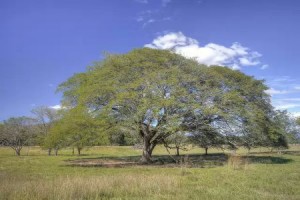Sunday, January 26, 2014
Wednesday, January 22, 2014
Sunday, January 19, 2014
Coffee, Tea & Water Keynoter: Luz Marina Trujillo, Santa Elena Coffee Estate | Articles | Vending Features | Vending Times Inc.
Coffee, Tea & Water Keynoter: Luz Marina Trujillo, Santa Elena Coffee Estate | Articles | Vending Features | Vending Times Inc.
She grew up on a Colombian coffee estate and moved to Costa Rica in 1989 to run the Santa Elena coffee farm that her father and uncle had purchased years earlier. "I planned to stay six months, but it's been 24 years," she laughed.
She grew up on a Colombian coffee estate and moved to Costa Rica in 1989 to run the Santa Elena coffee farm that her father and uncle had purchased years earlier. "I planned to stay six months, but it's been 24 years," she laughed.
Tuesday, January 14, 2014
The Magnificent Tree That Guanacaste is Named After
The Magnificent Tree That Guanacaste is Named After

Source: Flickr CC
This province is named after Enterolobium cyclocarpum, a tree species from the Fabaceae family, which is a magnificent tree that grows in the northern Pacific lowlands of Costa Rica. It is an important tree in terms of providing shade and oxygen, and it thrives in the dry tropical forest despite the lower amounts of rain in that region.
The word Guanacaste is of Nahuatl origin. This is an Uto-Aztecan language spoken by indigenous Mesoamericans and adopted by other cultures such as the Mayas. The morphology of the word indicates two root words at play: Quaiti (tree) and nacaztli (ear); put those two together and you get “ear tree.” The ears are an allusion to the fruit of this flowering tree, which is used to feed livestock and is favored by bush hogs and field mice. People who live near Guanacaste trees can easily tell when blooming is complete due to the loud cacophony of parrots that enjoy feasting on the ear fruits in the afternoons.
Until recently, Guanacaste was known for its rich agricultural and livestock ranching heritage. In the 21st century, however, farming and ranching have given way to tourism and real estate development. This has caused displacement and unemployment in many sectors, but it has also opened the door for very lucrative opportunities. For this reason, legislative and presidential candidates mention Guanacaste more than any other region in Costa Rica. Thanks to these developments, Guanacaste has almost become synonymous with Costa Rica.
Subscribe to:
Comments (Atom)
